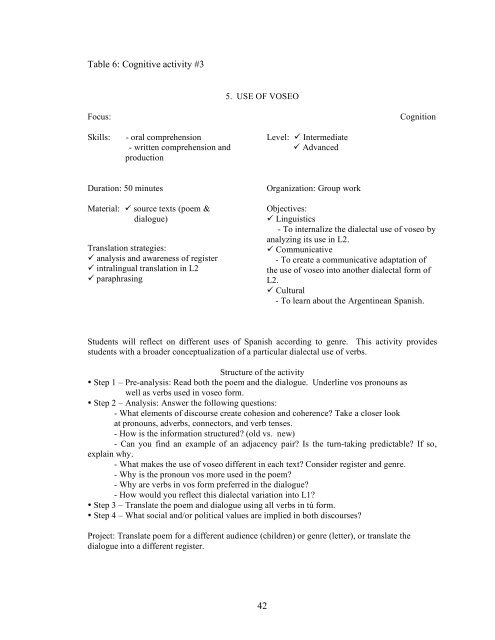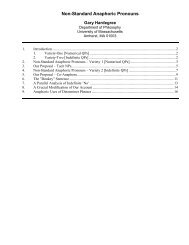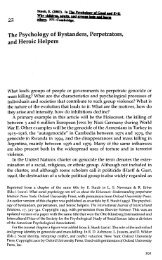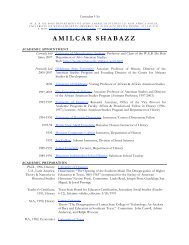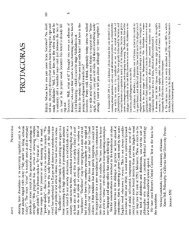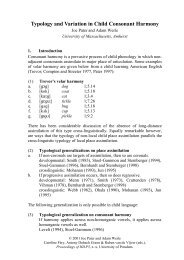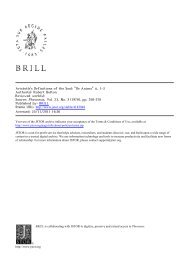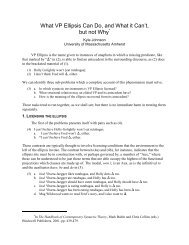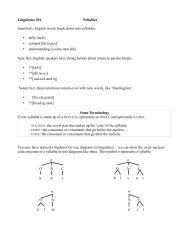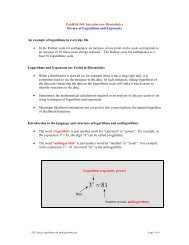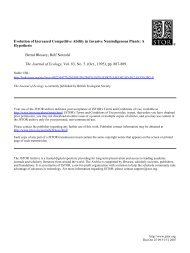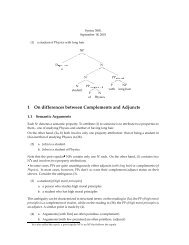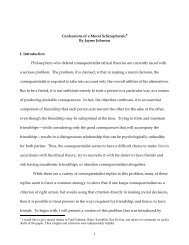rethinking translation in the second language classroom
rethinking translation in the second language classroom
rethinking translation in the second language classroom
You also want an ePaper? Increase the reach of your titles
YUMPU automatically turns print PDFs into web optimized ePapers that Google loves.
Table 6: Cognitive activity #3<br />
5. USE OF VOSEO<br />
Focus: Cognition<br />
Skills: - oral comprehension<br />
- written comprehension and<br />
production<br />
Duration: 50 m<strong>in</strong>utes<br />
Material: source texts (poem &<br />
dialogue)<br />
Translation strategies:<br />
analysis and awareness of register<br />
<strong>in</strong>tral<strong>in</strong>gual <strong>translation</strong> <strong>in</strong> L2<br />
paraphras<strong>in</strong>g<br />
42<br />
Level: Intermediate<br />
Advanced<br />
Organization: Group work<br />
Objectives:<br />
L<strong>in</strong>guistics<br />
- To <strong>in</strong>ternalize <strong>the</strong> dialectal use of voseo by<br />
analyz<strong>in</strong>g its use <strong>in</strong> L2.<br />
Communicative<br />
- To create a communicative adaptation of<br />
<strong>the</strong> use of voseo <strong>in</strong>to ano<strong>the</strong>r dialectal form of<br />
L2.<br />
Cultural<br />
- To learn about <strong>the</strong> Argent<strong>in</strong>ean Spanish.<br />
Students will reflect on different uses of Spanish accord<strong>in</strong>g to genre. This activity provides<br />
students with a broader conceptualization of a particular dialectal use of verbs.<br />
Structure of <strong>the</strong> activity<br />
Step 1 – Pre-analysis: Read both <strong>the</strong> poem and <strong>the</strong> dialogue. Underl<strong>in</strong>e vos pronouns as<br />
well as verbs used <strong>in</strong> voseo form.<br />
Step 2 – Analysis: Answer <strong>the</strong> follow<strong>in</strong>g questions:<br />
- What elements of discourse create cohesion and coherence? Take a closer look<br />
at pronouns, adverbs, connectors, and verb tenses.<br />
- How is <strong>the</strong> <strong>in</strong>formation structured? (old vs. new)<br />
- Can you f<strong>in</strong>d an example of an adjacency pair? Is <strong>the</strong> turn-tak<strong>in</strong>g predictable? If so,<br />
expla<strong>in</strong> why.<br />
- What makes <strong>the</strong> use of voseo different <strong>in</strong> each text? Consider register and genre.<br />
- Why is <strong>the</strong> pronoun vos more used <strong>in</strong> <strong>the</strong> poem?<br />
- Why are verbs <strong>in</strong> vos form preferred <strong>in</strong> <strong>the</strong> dialogue?<br />
- How would you reflect this dialectal variation <strong>in</strong>to L1?<br />
Step 3 – Translate <strong>the</strong> poem and dialogue us<strong>in</strong>g all verbs <strong>in</strong> tú form.<br />
Step 4 – What social and/or political values are implied <strong>in</strong> both discourses?<br />
Project: Translate poem for a different audience (children) or genre (letter), or translate <strong>the</strong><br />
dialogue <strong>in</strong>to a different register.


